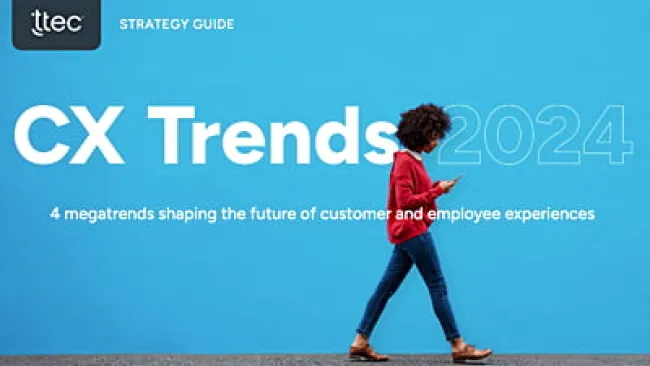Focus. Five letters. Two syllables. Not complicated.
Too often, we fail to focus and chase numerous goals, countless KPIs — sometimes at odds with each other — in pursuit of excellence. Smart CX leaders across all industries know a better way and they recently shared their wisdom with CCMA through a series of in-depth, enlightening interviews.
The resulting report, “Bringing the Power of Data and Analytics to the Front Line,” will be discussed at a 5 September webinar featuring prominent CX leaders and our own Rob Allman, senior vice president, TTEC Digital EMEA.
Delighted to get a sneak peek at CCMA’s research prior to release, I wanted to share a few findings worth noting. A chief theme articulated by respondents is that contact centre leaders need to remember the Pareto Principle and leverage data and analytics to identify what matters most — which varies from organisation to organisation. If we focus our efforts on identifying and resolving the small portion (20%) of issues that truly matter — those vital few exceptions that often escape notice — the impact will be astounding.
A sampling of intriguing insights from real CX practitioners, not data nerds:
Lose the fear
You can’t overcome what you don’t confront. Fear of technology, especially artificial intelligence, is widespread. We can ease concerns if we take the lead and show people — actually put into practice — how AI benefits contact centre operations and our front-line employees.
I’m onboard with a vice president of customer care at travel company Go City who told CCMA, “We have to take away the fear that the technology is going to replace people. It will shift people toward value-added tasks, things that the bot or an AI engine can’t do very well. For example, conversations requiring empathy, highly complex, or emergency situations.”
Great point. AI can take on transactional tasks but that’s just the beginning. AI can do so much more than automate the mundane. What’s key here, especially as we explore more advanced applications of AI, is to preserve and prioritise empathy for the best customer experience.
Keep the human component
CX leaders must find that sweet spot between automating decision-making for better consistency, whilst retaining the individuality and creativity of our human front-line associates. Leveraging technology, such as speech analytics that captures customer sentiment and other subtle cues, can help associates engage on a more personal level.
One survey respondent amplified the importance of blending technology and humans to best effect by asking: What do we know about the customer? “How can I make sure that when an agent manages that contact, that they’ve got enough context to deliver a good outcome,” said a senior manager from home furnishings retailer Dunelm. “For us, it’s about knowing where that customer’s been in their journey.”
Cut down on KPIs
We can get caught up in KPIs and it’s tempting to keep adding more to the mix. Don’t. One customer services director nailed it when she explained how software company Sage Group sifted through their metrics to prioritise those that matter most.
“We’ve managed to simplify a lot of our KPIs because it was getting too numbers-oriented and people were focusing on the number, not thinking about the experience for the customer,” she said. Their team managers and not front-line associates are accountable for average handle time (AHT) targets, for example. Associates are focused instead on first-time resolution metrics and Net Promoter Score to ensure high quality service.
Undue focus on the wrong metrics or misinterpretation can lead you down the wrong path. For example, an AHT of 18 minutes might be viewed as poor performance, when in fact it could represent an excellent interaction that boosts customer retention.
It all comes back to focus. What are the exceptions to the rule and how can those issues be addressed and improved. Data and analytics help decipher the 80/20 concept, that statistically, 80% of outcomes are the result of 20% of causes. If we can identify and get better at handling that 20% through technology and humans, we can improve results exponentially, to the tune of 80%.
At Atom Bank, the majority of customer journeys are digital and self-served. “As a result, when customers do need to contact us, it’s probably going to be the 20%,” the bank’s head of brand and experience told CCMA researchers. “They're going to be more complex, longer conversations, more difficult to solve.”
The “Bringing the Power of Data and Analytics to the Front Line” report is jam-packed with intriguing insights from CX leaders across banking and financial services, technology, transportation, insurance, hospitality, travel, entertainment, retail, and the public sector.
To benchmark your organization on how well it’s leveraging real-time insights — and putting them to work — take our quick online business intelligence assessment.














